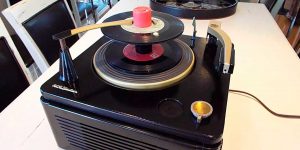The turntable is a unique audio piece of equipment that allows you to enjoy the timeless charm of vinyl records. It consists of several main parts, each of which plays a vital role in the playback process.
The turntable’s platter spins the record while the tone arm holds the cartridge and stylus, delicately tracing the grooves. The cartridge, in turn, contains a stylus responsible for making physical contact with the record and converting vibrations into electrical signals. In addition, there are other important components, such as a preamp, speed switch, and I/Os, that enhance the player’s functionality and connectivity.
Learning about these parts and their functions paves the way for a deeper understanding of the intricacies involved in the exciting world of vinyl playback. That’s why in this article, we will look at the main and additional parts of the record player, what types of each component are, how they differ, their features, and their purpose. This will help you better to understand the principles of the functioning of turntables, to understand the topic deeper, and take one more step towards becoming a true audiophile!
Main parts of a record player
As I said earlier, modern turntables consist of several main parts. It is on them that the operation of the device depends, and in this part of the article, I will consider each element in detail and talk about its purpose and main functions.
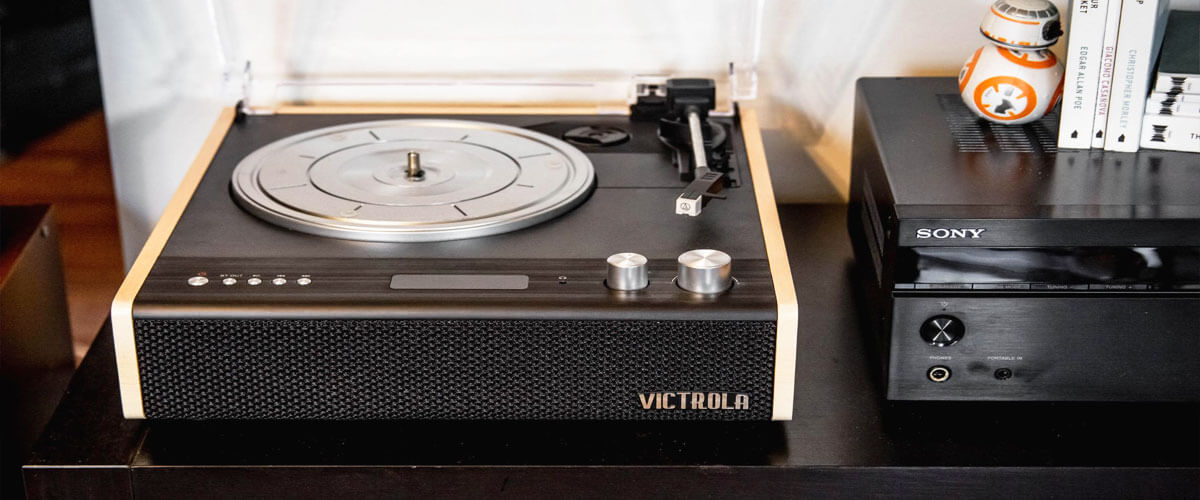
Turntable
The plate is the foundation that supports the other parts of a turntable. Its main function is to mechanically isolate (dampen) all turntable parts from each other.
The quality of a vinyl turntable is eloquently demonstrated not only by its specifications but also by the materials with which it is assembled. For example, the device’s weight must be bigger to effectively suppress the vibrations that occur. An important requirement for the case material is the complete absence of sound resonance effect in it. Cheaper models of turntables are made of MDF, plastic, or acrylic. Good properties have lexan, but the best samples are made of high-quality composite materials. Discs are usually made of steel, aluminum, or polymers. The more the disk weighs, the better. Due to the inertia will maintain a constant value of the angular velocity of rotation. This means that sound distortion will not be heard when the turntable is in use.
Platter
The disc is another important turntable component in the overall sound quality and system performance. This is a rotating platform on which a vinyl record rests during playback. The choice of disc material greatly affects the player’s performance and sound reproduction.
Traditionally, turntable plates have been made from materials such as aluminum or steel. These metals have a good balance between stiffness and weight, providing stability and reducing resonance. In recent years, the use of alternative materials such as acrylic and glass has increased.
Let’s look at these materials and their features in more detail.
| Type of plates | Description |
|---|---|
| Aluminum | They are commonly used in mid-range turntables, offering decent performance at an affordable price. |
| Steel | They are often used in more expensive models, providing improved damping properties and better overall sound quality. |
| Acrylic | It is one of the modern materials known for its excellent vibration-damping properties. Acrylic plates help to minimize resonance and unwanted vibrations, resulting in cleaner and more accurate sound reproduction. |
| Glass | It also has the same benefits as acrylic plates, providing superior vibration control and plate stability. They can contribute to a detailed, transparent sound presentation with improved visualization and instrument separation. |
From my experience, I will say that aluminum and steel plates provide a warm and reliable sound, while acrylic and glass plates provide more detailed and neutral sound reproduction.
Tonearm
The tonearm is responsible for holding the cartridge and the stylus that tracks the grooves of the vinyl record.
It plays a critical role in accurately extracting the audio information stored on a recording and transferring it to the audio system. Tonearms come in many different types, each offering unique features and benefits. I have prepared for you a table of different types of tonearm so that you can determine the most suitable for you. Let’s look at it in more detail.
| Type of tonearm | Description |
|---|---|
| Direct tonearm | It features a simple, straight design that provides efficient tracking and accurate cartridge alignment. Straight tonearms are generally known for their accuracy and low distortion, making them suitable for audiophiles seeking accurate sound reproduction. These are often found in Hi-Fi turntables. |
| S-shaped tonearm | This design incorporates a smooth curve to improve tracking performance and reduce distortion. The S-shaped arm helps maintain the correct position between the stylus and the record grooves, minimizing wear and improving overall sound quality. It strikes a good balance between trackability and ease of use, making it a versatile choice for music lovers and casual listeners alike. |
| Suspended tonearm | It’s a great choice for DJs and enthusiasts doing scratching and other manual recording manipulations. |
| Cardan tonearm | In this case, a dual-pivot system is used, providing greater freedom of movement and precise tracking even with vigorous manipulations. |
| Tonearms with adjustable characteristics | These arms allow users to adjust parameters such as tracking force, anti-skating, and azimuth to optimize performance for specific cartridges and records. They offer flexibility and customization options for audiophiles who enjoy customizing their turntables. |
The choice of tonearm depends on the specific requirements and preferences of the user. Now, I’m moving on and want to talk about cartridges.
Cartridge

The cartridge is responsible for converting the mechanical vibrations of the stylus that tracks the grooves of the vinyl record into electrical signals.
Cartridges are available in two main types, moving coil (MC) and moving magnet (MM), each with unique features and characteristics. Let’s compare these two types using my table so you can decide which type is best for you.
| Type of cartridges | Description |
|---|---|
| Moving coil (MC) cartridges | They are equipped with a spool of wire attached to the needle assembly. As the stylus moves along the record grooves, the coil moves inside the stationary magnet, generating a small electrical signal. MC cartridges provide more refined sound reproduction with nuance, making them a popular choice among audiophiles. However, due to their low output voltage and impedance, MC cartridges often require a dedicated phono stage with MC input capability. They also tend to be more expensive compared to MM cartridges. |
| Moving magnet cartridges (MM) | They use a magnet attached to a needle assembly that moves inside stationary wire spools. This movement generates an electrical signal. MM cartridges are widely known for their affordability, ease of use, and compatibility with a wider range of phono stages. They generally provide a warm and musical sound reproduction, making them a popular choice for casual listeners and those on a budget. |
Thus, we have considered 2 main turntable cartridges. Now we should consider styluses and what they are.
Stylus
The stylus is responsible for physically tracking the grooves of a vinyl record and converting them into electrical signals. Styluses come in various types, each offering different performance and compatibility features. Tapered and elliptical styluses are the two most common types. I have also prepared a table comparing them, and I suggest you look at it now.
| Type of stylus | Description |
|---|---|
| Conical needles | They have a rounded tip for durability and compatibility with old or worn records. They provide solid tracking but may sacrifice some high-frequency detail. |
| Elliptical needles | They have a thinner, pointed tip that allows for more accurate tracking of the grooves. They provide improved high-frequency responses and more accurate reproduction of details. |
| Microlinear styluses | They have an even narrower and more refined contact surface. They excel at extracting the finest detail from the grooves, offering exceptional tracking and high-resolution sound reproduction. These styluses appeal to audiophiles seeking the highest level of precision. |
| Advanced stylus profiles such as Shibata and SAS (Super Analog Stylus) | They further improve the area of contact with the recording grooves, resulting in improved accuracy, improved channel separation, and reduced distortion. They do a great job with complex passages and highly dynamic recordings. |
Factors to consider when choosing a stylus include budget, recording status, and desired audio quality. Tapered styluses provide versatility, while elliptical, microlinear, Shibata, and SAS styluses provide higher performance and accuracy. Matching the stylus type to the cartridge’s capabilities ensures optimal tracking and playback of sound from the turntable.
Additional components
In addition to the main components, various additional record player components can enhance the player’s functionality and performance. These include features such as built-in preamps for easy connection, speed selectors for adjusting rotational speed, anti-roll mechanisms for proper tracking, and I/Os for seamless integration with external audio devices. These additional components provide versatility and customization options, allowing users to customize their turntable to suit their specific needs and preferences. In this part of the article, as an expert, I will consider additional players’ components and their varieties.
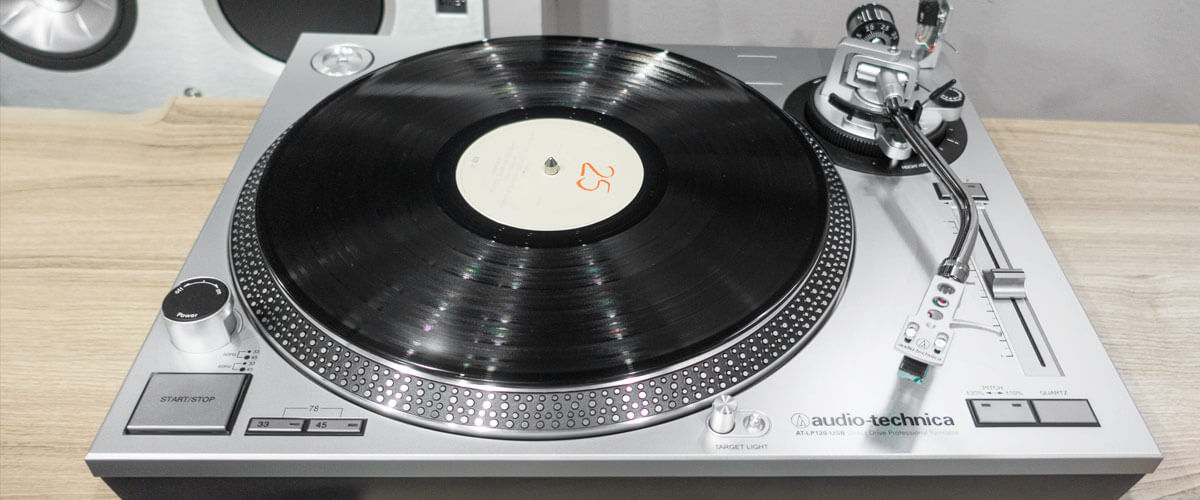
Drive mechanism
The drive mechanism is responsible for the rotation of the turntable and providing the necessary rotation speed for accurate playback of vinyl records. There are two main types of drive mechanisms: belt drive and direct drive, each with unique features and benefits. Let’s take a closer look at these two types of drive mechanisms.
| Type of drive system | Description |
|---|---|
| Belt drive system | This system uses a rubber or silicone strap to connect the turntable motor to the platter. The motor turns the belt, which in turn turns the disk. Belt drive systems are known for their low noise and vibration transmission as the belt acts as a buffer, isolating the disc from motor-induced interference. This isolation can lead to improved sound quality, reduced motor noise, and reduced interference. Audiophiles often prefer belt-driven turntables for finer, more accurate sound reproduction. |
| Direct drive systems | In such systems, the motor is directly connected to the turntable’s platter, eliminating the need for a belt. Direct-drive rotary tables offer a number of benefits, including higher torque and more precise speed control. This makes them ideal for DJing as they can start and stop quickly and maintain a stable speed even when manually processing the recording. Direct drive systems tend to be more reliable and durable, with better resistance to external forces. |
The choice between belt drive and direct drive depends on the intended use and personal preference. Belt-driven turntables are often preferred for their improved sound quality and accuracy, making them suitable for critical listening and audiophile applications. On the other hand, direct-drive turntables are great for DJing and situations where fast start/stop features and speed stability are critical.
Preamp
A preamplifier, also known as a phono stage, is responsible for amplifying the low-level electrical signals produced by the cartridge and preparing them for further amplification by the audio system.
Some turntables have a built-in preamp, but external phono stages are often available as separate components. Let’s take a look at these two types of preamps to compare their performance.
| Type of preamps | Description |
|---|---|
| Built-in preamps | In such systems, the preamp stage is built into the player itself. This provides a convenient plug-and-play experience as the turntable can be connected directly to the line-in input on an amplifier or receiver. However, the sound quality of the built-in preamps may vary depending on the quality of the components and circuits used. |
| External preamps | They are available as separate components. These specialized preamps often offer higher-quality amplification and more advanced features to give you more control over your sound. They can be connected between a turntable and an amplifier or receiver, providing finer and more precise amplification of the signal from the cartridge. |
Choosing between a built-in or external preamp depends on individual preference, budget, and desired sound quality. External preamps usually provide better sound reproduction and flexibility, allowing you to upgrade and customize them, while built-in preamps offer convenience and simplicity. When looking for the optimum sound from a turntable, it is important to consider the quality of the preamp.
Speed selector
The speed switch allows you to select and adjust the rotation speed of the player. Most turntables offer two standard speeds: 33 1/3 revolutions per minute (rpm) for phonograph records and 45 rpm for singles or smaller format records.
The speed selector ensures that different vinyl records play correctly since each record is usually processed to play at a specific speed. By selecting the appropriate speed on the selector, the turntable spins the record at the correct speed, providing accurate pitch and timing.
Some advanced turntables may offer additional speed options, such as 78 rpm for playing vintage shellac records. This versatility allows the player to play a wider range of vinyl formats.
The speed selector can be a simple switch or button on the front of the turntable, allowing quick and easy adjustments. It’s important to make sure the speed switch is properly calibrated and working properly to ensure accurate playback of recordings.
Having a reliable and accurate speed switch is critical for an optimal listening experience, ensuring that recordings are played back at the correct speed while maintaining their original sound and musical intent.
Anti-skating mechanism
This component is designed to counteract the internal force acting on the tonearm due to the stylus tracing the vinyl record’s grooves. It applies an outward force to the tonearm, preventing it from moving toward the center of the record. This mechanism helps maintain proper tracking and balance, reducing distortion and ensuring accurate reproduction. By balancing the tone arm, the anti-roll mechanism plays a vital role in maintaining the accuracy and durability of both the stylus and the record.
Inputs and outputs
The inputs and outputs make it easy to connect to external audio devices. Using the inputs, you can connect external sources such as CD players or digital music players to the player, allowing you to enjoy a variety of music formats.
Outputs, on the other hand, provide a means to connect the turntable to amplifiers, receivers, or speakers, allowing an amplified signal to be delivered and heard.
These input and output connections enhance the player’s versatility and functionality, allowing seamless integration into your audio system.
Well, that’s the end of my review. In this article, I reviewed the anatomy of a record player. I hope this information will help you better understand the topic and such devices.


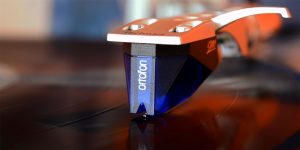



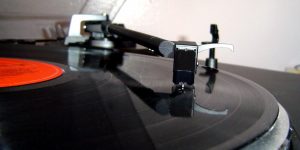
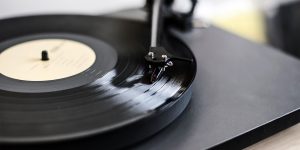
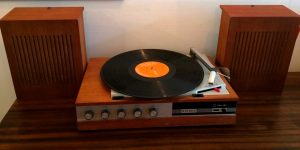
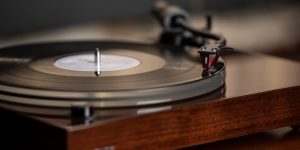

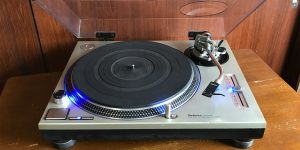
![Connect a Turntable to Your Wireless Bluetooth Speakers [Easy Guide]](https://www.vinylrecordday.org/wp-content/uploads/2021/12/tuntable-and-sonos-speaker-300x150.jpg)
